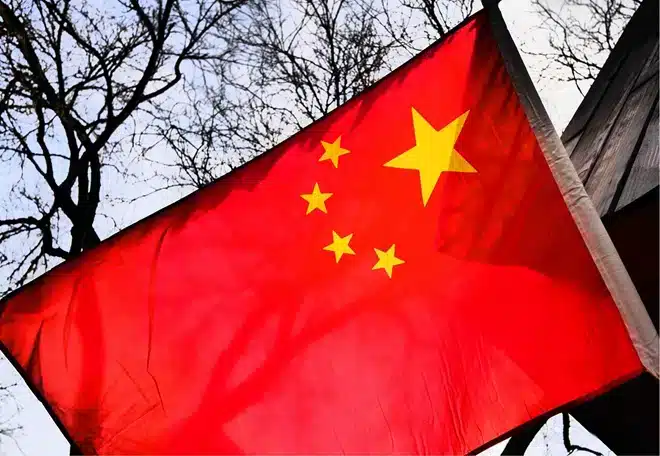Copyright System in Japan: The Complete Picture of Copyrights and Related Rights that Managers Should Know

In the Japanese business environment, content and technology are critical elements that influence a company’s competitiveness. At the core of this is the Japanese Copyright Law. The Japanese Copyright Law grants authors the exclusive right to control the use of their works, namely copyright. Understanding this right accurately and applying it appropriately is extremely important for companies that create content, use content, or enter the Japanese market from abroad, in terms of both legal risk management and business strategy formulation.
Copyright in Japan is not a single right but is composed of a bundle of exclusive rights, or sub-rights, that vary depending on the form of use of the work. Works that are subject to copyright are defined as those that creatively express ideas or feelings and belong to the realms of literature, science, art, or music (Japanese Copyright Law, Article 2, Paragraph 1, Item 1). In corporate activities, a wide range of materials such as software, databases, advertising copy, designs, and training materials can be protected as works.
When learning about Japanese Copyright Law, the first thing that managers and legal department staff should recognize is the fundamental difference between copyright and the ‘ownership’ of a work. Next, it is essential to understand what specific sub-rights constitute that copyright. Japanese Copyright Law broadly categorizes the rights of authors into economic rights (property rights) and moral rights (author’s personal rights). This article will primarily detail the property rights that are directly connected to corporate economic activities, explaining their content and legal basis.
This article will explain the sub-rights defined by Japanese Copyright Law, namely the rights to reproduce, perform, present, transmit to the public, recite, exhibit, distribute, transfer, lend, translate, adapt, and the rights of the original author concerning the use of derivative works, based on specific provisions of the law. Understanding these sub-rights forms the foundation for protecting your company’s intellectual property and legally utilizing third-party works.
Distinguishing Copyright from Ownership Rights
In legal terms, copyright and the ownership of the medium on which a work is recorded (for example, books, CDs, original paintings, etc.) are distinctly separated. Under Japanese Civil Law, ownership is defined as “the right to freely use, profit from, and dispose of one’s property within the limits of the law” (Article 206 of the Japanese Civil Code). On the other hand, copyright is an intangible right that controls the use of a work.
For instance, when a company purchases software, what the company owns is the ownership of the medium itself—be it the disk on which the software is recorded or the downloaded data. However, this does not grant the company the right to freely replicate or redistribute the software to the public (copyright). Copyright remains reserved for the author (or the person who has acquired the rights), and users can only utilize the work within the scope permitted by the copyright holder.
This distinction is particularly significant in the transfer or exhibition of works. Transferring the physical medium of a work to another party does not automatically transfer the copyright as well. To transfer copyright, a clear expression of intent or a contract is required (Article 61, Paragraph 1 of the Japanese Copyright Law).
The table below compares the differences between copyright and ownership rights.
| Aspect | Copyright (Intangible Property Rights) | Ownership Rights (Tangible Property Rights) |
| Subject | Intangible creative works | Physical medium where the work is fixed (e.g., books, CDs, devices with recorded data) |
| Nature of Rights | Exclusive right to authorize or prohibit the use of the work, such as reproduction, public transmission, transfer, etc. | Right to use, profit from, and dispose of the physical medium |
| Legal Basis | Japanese Copyright Law | Japanese Civil Law |
| Transfer | Requires a separate expression of intent to transfer by contract (Article 61, Paragraph 1 of the Japanese Copyright Law) | Transferred through the delivery of the physical medium, etc. |
The Structure of Economic Rights as Divisional Rights Under Japanese Copyright Law
Under Japanese Copyright Law, copyright (property rights) is divided into exclusive rights granted to authors based on the manner in which the work is used, known as divisional rights, detailed from Article 21 to Article 28. These divisional rights exist as independent rights, allowing the rights holder to license or transfer each right separately to others. When companies enter into licensing agreements, it is crucial to clarify which divisional rights are being licensed and which rights are being retained by the company to avoid disputes later on.
Copyright Reproduction Rights Under Japanese Law
Reproduction rights are one of the most fundamental exclusive rights under Japanese copyright law, granting authors the exclusive right “to reproduce their works in tangible forms through printing, photography, copying, recording, video recording, or other methods,” as stipulated in Article 21 of the Japanese Copyright Law.
In the digital age, the importance of this right has significantly increased. Acts such as saving works on a hard disk, capturing website content as screenshots, or copying data between servers are considered “reproduction” in most digital usage contexts. Therefore, as a general rule, the copyright holder’s permission is required to perform these acts.
Performance Rights, Music Performance Rights, Screening Rights, and Recitation Rights Under Japanese Copyright Law
These rights pertain to the act of transmitting a work to the public.
Under Article 22 of the Japanese Copyright Law, the right to perform and the right to play music works “publicly” are exclusively held by the author. Here, “publicly” means presenting or playing the work to an unspecified or specified large number of people. For instance, if a company plays someone else’s music in their conference room or at an event, whether this constitutes a “public” performance determines if there is an infringement of the music performance rights.
Screening rights, as defined in Article 22-2 of the Japanese Copyright Law, are the exclusive rights of the author to project the work onto a screen or other object, primarily related to movie works. When a company shows a movie or similar work during in-house training, it is necessary to consider whether this falls under the screening rights.
Recitation rights, according to Article 24 of the Japanese Copyright Law, are the exclusive rights of the author to recite the work “publicly.” This right controls acts such as reading someone else’s paper or novel aloud during lectures or broadcasts.
The Right of Public Transmission and the Right of Public Communication Under Japanese Copyright Law
The right of public transmission is one of the most crucial rights in the Internet era. Under Japanese Copyright Law (Article 23, Paragraph 1), this right exclusively belongs to the author and includes the right to transmit works to the public (including automatic public transmission). Public transmission refers to the act of transmitting via wireless or wired telecommunication with the intention of being directly received by the public. Specifically, this encompasses the publication of content on websites, streaming distribution, and the transmission of works via email newsletters.
Furthermore, the right of public communication is the right to publicly convey works that have been transmitted to the public using a receiving device (Japanese Copyright Law, Article 23, Paragraph 2). For example, when a store or facility receives broadcasts from television or internet radio and plays them on the premises, this act falls under the right of public communication. When a company streams music or videos within its own facilities, it must consider both the right of public transmission and the right of public communication.
The Right of Exhibition Under Japanese Copyright Law
The right of exhibition, as stipulated in Article 25 of the Japanese Copyright Law, is the exclusive right of the author to publicly exhibit their original works of art or photographic works. This allows copyright holders to control how their works are displayed in public spaces. However, as it is not the main subject of this article, the explanation of the right of exhibition related to applied art will be omitted.
Distribution Right, Transfer Right, Lending Right
These rights are related to the circulation of copyrighted works and are particularly important for controlling the distribution of materialized works (such as films).
The distribution right is the exclusive right of the author to offer copies of a film work to the public, as defined in Article 26, Paragraph 1 of the Japanese Copyright Law. It is important to note that, in the case of film works, the distribution right is established separately from the reproduction right.
The transfer right is the exclusive right of the author to “transfer the original or copies of the work to the public,” as set forth in Article 26-2, Paragraph 1 of the Japanese Copyright Law. This right pertains to the sale of physical copyrighted works such as books, CDs, and artworks.
What is crucial here is the principle of “exhaustion” of the transfer right. According to Article 26-2, Paragraph 2 of the Japanese Copyright Law, once a copy of a copyrighted work has been lawfully transferred to the public by the copyright holder, the transfer right no longer applies to that copy. This is known as “exhaustion.” For example, once a book is legitimately purchased, the copyright holder cannot exercise the transfer right to prohibit the purchaser from selling the book to a used bookstore or passing it on to someone else.
The principle of exhaustion is also important in international business. For instance, the Supreme Court of Japan has made judgments on whether the transfer right has been exhausted for specific copyrighted works in relation to the sale of imported copies (parallel imports) within Japan (e.g., Tokyo District Court judgment on September 6, 2002). Companies must carefully assess whether the principle of exhaustion applies when dealing with inventory disposal or the used goods business.
The lending right is the exclusive right of the author to lend copies of the work to the public, as established in Article 26-3, Paragraph 1 of the Japanese Copyright Law. This right applies, for example, to the act of rental stores lending CDs or DVDs to the public.
Rights of the Original Copyright Holder Regarding Translation, Adaptation, and Use of Derivative Works Under Japanese Copyright Law
The right to translate and adapt, as stipulated in Article 27 of the Japanese Copyright Law, is exclusively held by the author and includes the right to translate, arrange, transform, dramatize, cinematize, or otherwise adapt a work.
‘Translation’ refers to the act of converting a work into a different language, while ‘adaptation’ refers to the act of creating a new form of work based on an existing one, while maintaining the essential personalityistics of the original expression. For instance, adapting a novel into a manga or porting existing software to a different programming language are examples of adaptations. When a company wishes to develop new content or products using someone else’s work, obtaining permission for these translation and adaptation rights is essential.
Furthermore, works created through adaptation are referred to as ‘derivative works’ (as defined in Article 2, Paragraph 1, Item 11 of the Japanese Copyright Law). When using derivative works (such as reproduction or public transmission), not only the copyright holder of the derivative work but also the rights of the original author must be respected, as set forth in Article 28 of the Japanese Copyright Law. This is an important provision that allows the original author to indirectly control the use of their work through the derivative works.
Due to this provision, companies considering the use of derivative works must obtain permission from both the rights holder of the derivative work and the original author. For example, to stream a movie adapted from a novel (a derivative work), permission is required from both the filmmaker (the rights holder of the derivative work) and the novelist (the original copyright holder).
Regarding copyright and generative AI, discussions continue globally, and the interpretation and amendment of the Japanese Copyright Law are also under scrutiny. Under current law, whether AI learning and generative activities infringe on existing copyrights is judged on a case-by-case basis, depending on the purpose and manner of use. However, a detailed explanation is beyond the scope of this article and will be kept to a minimum.
Summary
The Japanese Copyright Law aims to protect the interests of authors from multiple angles by finely dividing rights according to the usage of works, while also contributing to the development of culture. For companies operating within Japan, it is essential to understand the structure of these subsidiary rights, including reproduction rights and public transmission rights, and to establish licensing agreements and compliance systems.
Especially in the modern era where content is distributed across borders via the internet, it is crucial for strategic management to pay close attention to the exhaustion of transfer rights, the scope of public transmission rights, and the handling of derivative works as stipulated under Japanese Copyright Law. Because each subsidiary right is independent, companies must precisely define in their contracts which rights are included in the licenses they have acquired and which acts of use are permitted.
Monolith Law Office has provided a wealth of experience and specialized legal services to numerous Japanese and international companies in resolving legal issues related to Japanese copyright. Our services include license negotiations, copyright infringement litigation support, and the formulation of intellectual property management strategies. Based on our frontline experience in Japan, we support our clients in these areas. Our firm is staffed with bilingual attorneys who hold foreign legal qualifications and are capable of seamless communication in English, enabling us to strongly support the intellectual property strategies of foreign shareholders, executives, and legal department members in Japan. Including responses to the complex copyright issues of the digital age, our firm is always ready to support the growth of your business from a legal perspective.
Category: General Corporate





















